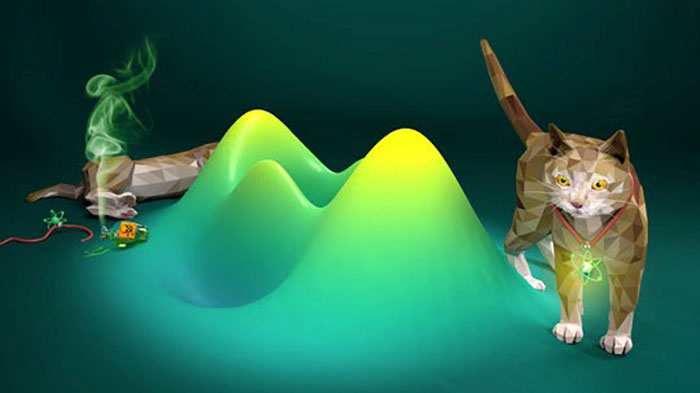The analogue of Schrödinger’s thought experiment realized at the MPQ was theoretically proposed in 2005 by the theoreticians Wang and Duan. The cat is represented by coherent laser pulses, which may exist in a superposition of different phases. To create such a superposition, the researchers reflect a laser pulse with a well-defined phase from an optical resonator consisting of two mirrors separated by a slit of only 0.5mm. The resonator contains a single trapped atom initially prepared in a superposition of two states. In the reflection process, the laser pulse interacts with the atom and gets entangled with it. A subsequent measurement on the atom eventually allows generating the desired optical cat state.
Applications to Quantum Communication
The results achieved have potential applications in future quantum networks. The experiments show that suitable measurements on the atom allow for the generation of a whole zoo of different cat states. These states are not confined to a box as in Schrödinger’s thought experiment. As they are made of light, they can fly between the nodes of a quantum network and even transmit quantum information. Also, cat states may enable quantum error correction schemes. The researchers hope to exploit these features in future experiments.
Text: International Doctorate Program "Exploring Quantum Matter“


